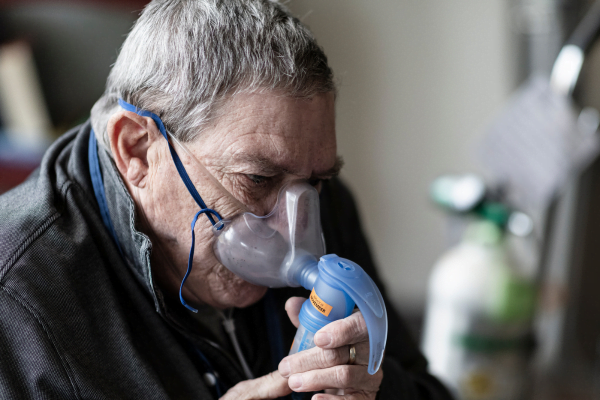Many travellers ask what is a pulmonary embolism because long flights raise concern. A pulmonary embolism (PE) happens when a blood clot blocks a lung artery, reducing oxygen and straining the heart. Knowing the risks, early signs, and practical steps can help you plan safer journeys and respond promptly.
Key Takeaways
- Long travel raises clot risk due to immobility and dehydration.
- Early recognition and rapid assessment can prevent severe complications.
- Anticoagulants (blood thinners) are the mainstay of PE care.
- Plan movement, hydration, and follow-up to reduce recurrence risk.
What Is a Pulmonary Embolism?
A pulmonary embolism (PE) is a clot that travels to the lung and lodges in a pulmonary artery, reducing blood flow and oxygen exchange. Clinicians call this a form of venous thromboembolism (VTE), which includes deep vein thrombosis (DVT) in the leg and clots that break off and move to the lungs. In plain terms, a clot blocks blood flow where oxygen should pass into your bloodstream.
Most clots form in the legs or pelvis, then migrate to the lung. Risk increases with immobility, recent surgery, cancer, pregnancy, hormones, and prior clots. Genetics, dehydration, and trauma may contribute as well. For a structured primer on DVT and PE basics, see Blood Clot DVT PE for context and definitions used across our site.
Travel Risks: Why Long-Haul Flights Raise the Stakes
Air travel combines prolonged sitting, limited leg space, mild dehydration, and lower cabin humidity. These factors can increase pulmonary embolism risk factors for some travellers, particularly those with recent surgery, cancer treatment, hormone therapy, or a personal clot history. The risk climbs with flight duration, but any lengthy seated period—car, train, or bus—can play a role.
Small changes help. Choose an aisle when possible, stand or walk every hour, and flex calves while seated. Drink water regularly and avoid heavy alcohol. If you have multiple risk factors, discuss compression socks or preventive strategies with your clinician before travel. The CDC travel guidance offers neutral, practical steps for long journeys.
Early Signs and Urgent Red Flags
Common pulmonary embolism symptoms include sudden shortness of breath, sharp chest pain that may worsen when breathing in, and rapid heartbeat. Some people notice coughing, sometimes with faint blood streaks, or leg swelling and tenderness if a DVT is present. These symptoms vary by clot size and your underlying health.
Seek urgent care if you experience fainting, severe breathlessness, a blue tinge to lips, or a sudden drop in blood pressure. Clinicians pay close attention to vital signs like oxygen levels, respiratory rate, and heart rhythm. If in doubt during travel, alert crew early so they can coordinate timely evaluation on landing. A low threshold for assessment protects you when symptoms are ambiguous.
For a plain-language overview, the MedlinePlus overview summarizes typical features and why speed matters.
Diagnosis and Staging: What Tests Show
Clinicians decide how is pulmonary embolism diagnosed by combining symptoms, examination, and tests. They may start with a D-dimer blood test to screen for clotting activity. Imaging often includes CT pulmonary angiography (CTPA) to visualize lung arteries, or a ventilation–perfusion (V/Q) scan when CTPA isn’t appropriate. Ultrasound can evaluate the legs for DVT as a source.
Teams also classify severity based on blood pressure, heart strain on echocardiogram, and imaging burden. This helps guide decisions about observation, hospitalization, or escalated therapies. If a clot is small and the patient is stable, outpatient management may be considered in select cases, using structured risk tools and close follow-up.
Risk Scores and Imaging Nuances
Clinicians may use scoring systems such as Wells or Geneva to estimate pre-test probability. These tools help avoid unnecessary imaging and support safer, faster decisions. Imaging choices balance accuracy, radiation, contrast risks, and practical constraints. For example, pregnancy, kidney function, or contrast allergies can shift testing preferences. Current practices evolve with evidence and technology; the CHEST guideline summarizes diagnostic and management pathways in a clinician-facing format.
Treatment Options and Recovery on the Move
The backbone of pulmonary embolism treatment is anticoagulation (blood thinners), which helps stop clots from growing and reduces the chance of new ones. Direct oral anticoagulants (DOACs) and low molecular weight heparins are commonly used, depending on individual factors. For DOAC information, see Edoxaban for approved indications and safety basics noted on our product page.
If injections are recommended, you can review options to understand how they fit care plans. See Inclunox HP for product details and safe use context, Elonox HP for brand-specific information, and Redesca HP for formulation guidance discussed on-site. Some patients may encounter brand alternates; Noromby HP provides another reference point for heparin products and key precautions.
Occasionally, advanced therapies are considered for large clots with heart strain. These may include catheter-directed thrombolysis (clot-busting medicine) or mechanical thrombectomy devices. Decisions hinge on stability, bleeding risk, and local expertise. For a balanced overview of DOAC choices and patterns of use, see Eliquis vs Apixaban to understand how clinicians compare options within a class.
Recovery Timelines and Return to Activity
People often ask about energy levels, exercise, and work. A gradual return helps most individuals regain function and confidence. Discuss when to return to work after pulmonary embolism with your clinician because job demands and personal risks differ. Many people start with a reduced schedule, adding activity as symptoms and stamina improve.
Physical recovery varies with clot size, pre-existing conditions, and how early treatment began. You may notice fatigue, breathlessness on exertion, or anxiety about recurrence. Gentle conditioning, like paced walking and breathing exercises, can support recovery. Ask about pulmonary rehabilitation programs if symptoms linger, and plan regular follow-ups to refine your activity plan over time.
Complex Cases: Procedures and High-Risk Scenarios
In select patients, a new procedure to remove blood clots from lungs may be offered using catheter-based devices that aspirate or fragment clots. Some centers deploy Pulmonary Embolism Response Teams (PERT) to coordinate rapid decisions. Surgical embolectomy can be considered in rare, severe cases when other options are unsuitable.
These approaches aim to reduce strain on the right side of the heart and improve oxygenation. However, they are not universally required and carry bleeding or procedural risks. Shared decision-making considers your preferences, bleeding profile, and local expertise. If such options are discussed, ask how benefits and risks were weighed against standard anticoagulation.
Sleep and Your Next Trips: Practical Prevention
Many people wonder: blood clots in lungs can you fly after treatment? With clinician guidance, many resume travel when stable and on a consistent plan. Space flights apart early on, and schedule walk-and-stretch breaks. For sleeping, elevate the head slightly, avoid tight waistbands, and set reminders to move or stretch on long flights.
If you sleep poorly due to chest discomfort or worry, paced breathing and a side-lying position may help. Discuss sedatives or sleep aids with your clinician because some can depress breathing. Consider compression socks, hydration, and aisle seats to enable movement. When weighing medications for prevention, see Eliquis vs Apixaban for a neutral class comparison and context before provider discussions.
Understanding Risk Over Time
Long-term outlook depends on age, other illnesses, whether a provoked event occurred (for example, surgery or travel), and how quickly treatment began. Some people recover fully, while others experience lingering breathlessness or exercise limits. A small subset may develop chronic thromboembolic pulmonary hypertension (CTEPH), which needs specialized follow-up and targeted management.
Thinking about the future can feel heavy. Focus on modifiable risks: movement on trips, medication adherence, and monitoring for new leg swelling or unexplained breathlessness. Ask about vaccination, lifestyle support, and rehabilitation resources. Over time, informed habits and steady care can lower recurrence risk and improve day-to-day confidence.
Recap
Air travel can slightly increase clot risk, especially when layered with other factors. Early recognition, evidence-based evaluation, and tailored treatment help most people recover and travel again more safely. Build a practical plan with your clinician, keep moving on long journeys, and seek assessment early when symptoms change.
Tip: Pack a small checklist—water bottle, compression socks, aisle seat request, and hourly stretch reminders—to make prevention feel automatic on every trip.
Note: If you have a history of clots, coordinate any travel plans with your healthcare team ahead of time to prevent gaps in medication or follow-up.
This content is for informational purposes only and is not a substitute for professional medical advice.

